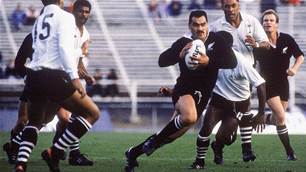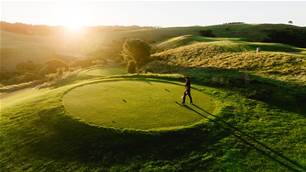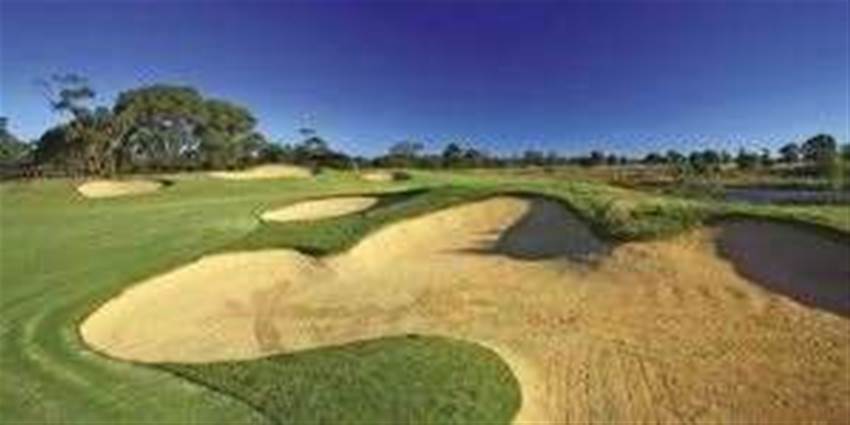One of the impressive recent additions to the eastern edge of the Sandbelt is the Sandhurst Club – a 36-hole private golf complex just 35 minutes’ drive from the CBD.
The wide-sprawl bunkering is typical Thomson and Perrett, while it is hard not to be impressed by the size and shaping of the greens on each hole, which have each been dedicated to a past winner of the Australian PGA Championship. This makes for an enjoyable added feature of a round as every tee has a plaque commemorating a player with a brief story of their career. For example, the 7th hole is dedicated to Kel Nagle, the winner of a record six PGA championships, while other players immortalised include Craig Parry, Greg Norman, Ossie Pickworth, David Graham and Wayne Grady.
This layout is more of the traditional Sandbelt-style with gentle fairway contours, open-fronted large greens and some fairways lined by ancient Red River gums.
“From a design point of view, the holes offer plenty of variety,” co-designer Ross Perrett says. “No two are the same. It will eventually be seen as a course of endless fascination with primary hazards dictating play.”
Ever the strategist, Thomson brings the same emphasis of thinking golf to his course designs and this can be seen from the opening shot of the round. The 376-metre par-4 1st, named after the three-time PGA winner Carnegie Clark, offers a generously wide fairway for players who resist using the driver, in preference for a fairway metal to leave a longer second shot into the green. The further you drive the ball from the 1st tee, the narrower the cut portion becomes and the more likely a bogey will be scored after hitting from the rough.
Smart play is also needed at the short par-4 4th hole, which appears seemingly easy when standing on the tee but the full extent of the test becomes apparent as you head down the fairway. This classic two-shotter is just 337 metres from the back markers and the two bunkers seen to the right of the fairway provide the best line for the drive. Hitting as close as possible to these two hazards – without dribbling into the sand – leaves you in the best spot to hit a short iron at any pin position on a green that is angled diagonally away from right-to-left. A drive down the middle of the fairway leaves a tough and obscured shot over a large, bunkered ridge. Eric Cremin, who won two PGA titles in the 1930s and was runner-up in the championship a record seven times, would be proud to have his name on this gem.
One of best holes on the Champions layout is the shortest hole, named after the shortest of the PGA winners celebrated here – Norman Von Nida. The 138-metre uphill par-3 is affected by wind so your club selection here is vital to avoid the waste bunker stretching across the front of the green and the three deep bunkers right beside the putting surface. The green is also long and narrow, which is not unlike the shape of the famed 10th hole at Kingston Heath but this modern creation is without the dramatic slopes off the lips of bunkers.
If you find it tough going on the courses, you might want to book some time with a coach at the PGA’s Golf Learning Centre, which has been established in recent times to offer world-class teaching and training facilities.
Related Articles

International Spotlight: Omanu Golf Club

Celebrity Kiwi couple tee off in paradise













